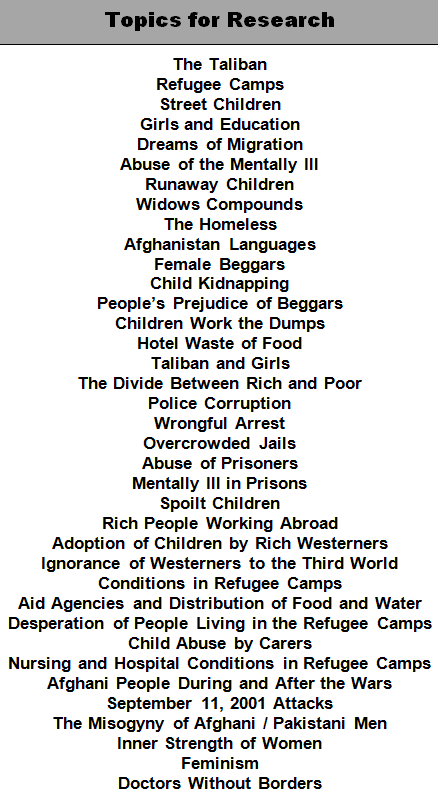Each and every year of our program, I still get genuinely excited at the start of the second semester. After a long and tiresome first semester, in which the primary focus of our syllabus is building our students' core English language skills, we return from the mid-year holiday break, and our attention turns to building academic skills and the importance of group work through three different thematic-based units.
The first of which is based upon There's a Boy in the Girl's Bathroom, written by acclaimed children's novelist, Louis Sachar. This is a story of a young fifth-grader named Bradley Chalkers who is a loner and a terrible student. Because of his serious lack of belief in himself, as well as receiving minimal pastoral support from his family, Bradley turns to bullying his school peers in order to make himself feel better. It isn't until a young, unorthodox school counselor named Carla Davis begins to take him under her wing that Bradley gradually starts to change for the better.
Although much of the novel does center around the personal growth and change in Bradley, my colleague and I decided that our core target while teaching this unit would be bullying. As educators, we have become all very aware of the prevalence of bullying in schools all around the world, and the terrible consequences it has on those affected. Even in our own private high school in an outer suburb of Istanbul, though physical bullying is rare, mental, verbal and cyber-bullying all do occur on a regular basis.
So, with this in mind, we wanted to first remind our students of the seriousness of bullying, teach them the different types, the consequences, as well as the reasons behind it through the use of various videos and non-fiction articles. One video I highly recommend that you watch and discuss with your students is called the Bullying Experiment, made by a couple of university students in the U.S.A. Check it out below...
The first of which is based upon There's a Boy in the Girl's Bathroom, written by acclaimed children's novelist, Louis Sachar. This is a story of a young fifth-grader named Bradley Chalkers who is a loner and a terrible student. Because of his serious lack of belief in himself, as well as receiving minimal pastoral support from his family, Bradley turns to bullying his school peers in order to make himself feel better. It isn't until a young, unorthodox school counselor named Carla Davis begins to take him under her wing that Bradley gradually starts to change for the better.
Although much of the novel does center around the personal growth and change in Bradley, my colleague and I decided that our core target while teaching this unit would be bullying. As educators, we have become all very aware of the prevalence of bullying in schools all around the world, and the terrible consequences it has on those affected. Even in our own private high school in an outer suburb of Istanbul, though physical bullying is rare, mental, verbal and cyber-bullying all do occur on a regular basis.
So, with this in mind, we wanted to first remind our students of the seriousness of bullying, teach them the different types, the consequences, as well as the reasons behind it through the use of various videos and non-fiction articles. One video I highly recommend that you watch and discuss with your students is called the Bullying Experiment, made by a couple of university students in the U.S.A. Check it out below...
The Project
After spending around two weeks discussing the various aspects of bullying and what we can do about it, we assigned our students a group project that they would work on autonomously in and outside of school time for the following two weeks. Their task was to create and promote their own Anti-Bullying Campaign which they would not only present to us, but also, in conjunction with our counseling department, present to the middle school students. The only requirement that we gave them was that they had to use one or more ICT tools to create their projects. For example, they could create their own bullying scenarios and record them on IMovie; they could create their own Stop Motion videos; or they could make promotional posters on Glogster.
The key, we believe, is that we gave them the freedom to be creative and produce whatever inspired them about bullying. This also left us to be very curious about what what they would come up with, and in the end, several of the groups left us speechless...
The key, we believe, is that we gave them the freedom to be creative and produce whatever inspired them about bullying. This also left us to be very curious about what what they would come up with, and in the end, several of the groups left us speechless...
Emre and Kaan
Despite waiting until the last couple of days, this group made a massive effort in producing their own Stop Bullying website using wix.com. The image below is the home page of their site, and you can see that they included the different types of bullying, how to stop it, and the reasons why people get bullied. Finally, they even add a link to a video about bullying that they thought gave a great message.
Gözde and Mina
The other example of a magnificent group effort that we would you like to share with you is these two students decided to make their own IMovie about two girls... one is the bully, and the other is the victim. Using only strong facial expressions and short messages on cards, they explain why children become bullies, and how it feels to be a victim. We were simply blown away by it. Have a look at it below...
To be quite honest, I was definitely worried a few days before the deadline of the project. When asking the students where they were in terms of getting their presentations ready, many admitted that they still had lots of work to do. I was thinking at that point that leaving them to their own devices was probably not the best idea. In the end, however, they had all proved me wrong.













































